BUYING A HELICOPTER
What to expect after buying a helicopter
Here is a look at what takes place after the sale and what should be thoughtfully considered before making the purchase.

By: HeliTraderPosted on: November 18, 2022
Before you’ve bought your helicopter and the funds have been successfully transferred, you should give careful consideration to what comes next. There are several steps to take and prepare for, even after your wallet gets lighter.
For buyers who have purchased aircraft from another country and need to have it brought home, that list is a little different, but no less important. Here is a look at what takes place after the sale and what should be thoughtfully considered before making the purchase.
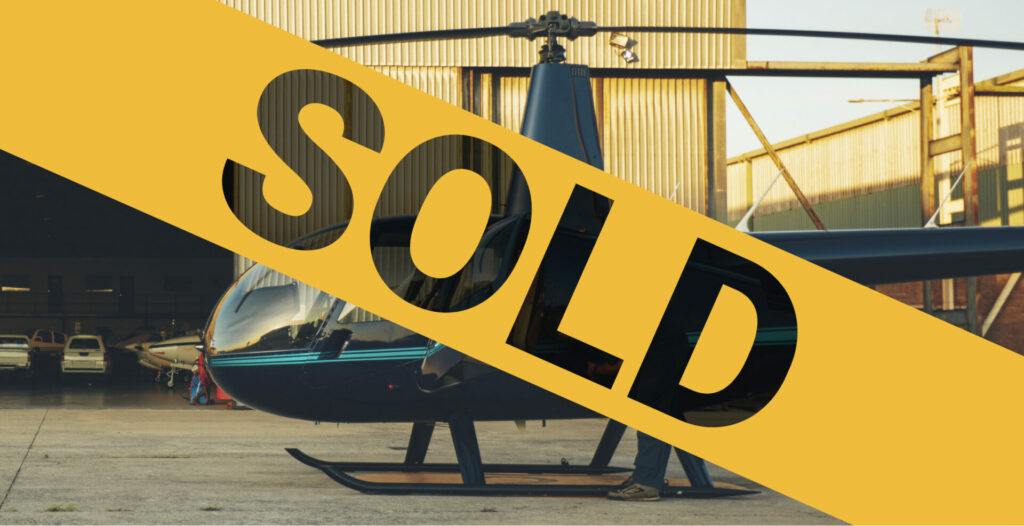
Customs, duties and taxes
It is important to work with your broker to clearly understand what is expected of you in terms of customs, duties, and taxes for both domestic and international sales.
When buying an aircraft within a country, sales taxes are owed; yet, in some international transactions, they are not owed in the selling country. In some cases, it’s the importing country that will charge through duties or even registration. A skilled broker with experience in helping clients buy and sell aircraft domestically and overseas will be well versed in these transactions and can prepare you to not only anticipate the costs, but have the correct paperwork in hand to make these transactions smooth.
How to get it home
New owners basically have two options for how to get their new helicopter home: fly it or ship it.
It is important to carefully weigh the benefits of each option. For ferrying, you must consider the hourly costs of operating the aircraft, ferry pilot fee, hotel and food costs and, of course, fuel. It’s important to budget a little extra should the aircraft be grounded for weather or maintenance.
When considering this option, it is important to determine if you can fly it yourself, send your own pilot, or hire a ferry pilot. Your broker or dealer will be able to help you crunch the numbers and weigh what your insurance will cover. Be aware that if you are a lower time pilot, you may not be insured to ferry the aircraft without training or a sign off. In some cases, having another qualified pilot join you solves this issue. Again, your broker will help you navigate how to best ferry or ship your aircraft at a price that works for you.
We will go in depth in a later article on the steps involved in ferrying a helicopter (flying it home), especially when crossing one or more borders.
Shipping
If you choose to ship your aircraft, you have a few choices. Air, land, and sea each have their own pros and cons, requirements, and prices. With each option, the shipping companies will work with you on how to get your aircraft to and from their location, be it trucking or flying in and out.
While a buyer can contact general shipping companies directly, helicopter transportation logistics companies are the safest bet. These specialists better understand the intricacies of each option and offer the added benefit of knowing how to ensure your aircraft is protected.

Direct Helicopter of Ontario provides a complete turnkey service, from helping with sales and managing imports and exports, to overseeing the full logistics of packaging, exporting, shipping, importing, and reassembling the aircraft.
“A lot of buyers want to keep shipping costs low, and that’s understandable. But a lot of shipping companies only want to know the length, height, and weight, and it’s up to you to figure out how you’ll determine that,” Direct Helicopter CEO Dave Urban explained. “We are different. We help clients understand what their responsibilities are, and we can perform those things for them so they’re done right to protect the aircraft and the customer.”
For instance, for an aircraft to be legally shipped, you will need a commercial invoice produced from a registered European company with a tax ID number. It is a good idea to clearly stipulate this requirement in an aircraft purchase agreement, Urban recommends.
“One of the most important things you should do — and you should do this well before you close the transaction or pay any money — is make sure you have an exportable aircraft,” said Urban. “There are a lot of machines being bought right now coming to North America. Obviously, we’re living in a financial climate that’s a little touchy and only going to get worse.
“We’re seeing a lot of bankruptcy sales, or guys going through a divorce and they’ve got to sell their asset,” he continued. “The machine is sitting at some maintenance hangar in Switzerland or Italy, but the guy is in Cyprus. A buyer comes in and buys the aircraft, and the seller declares the deal done and walks away. But from a shipping standpoint, that commercial invoice is vital so that I can export customs and clear the machine out of Europe. This is what all shipping companies require to export and clear the aircraft. But if you don’t have a machine that’s free and clear to export, no one can ship it.”
Packaging for shipping
If you choose to ship your helicopter, you’ll need to ensure it is prepared properly. A mechanic or engineer can help disassemble key parts of the aircraft and prepare it for shipping. Keep in mind, how it is prepared will depend on the way it is being shipped. More on that in just a bit.
Having a mechanic or engineer on hand during disassembly and packaging provides an added benefit, as this person can document the work done in the aircraft logbook — helping those who are reassembling it do a thorough job, suggested Doug Scott, owner of aircraft ground transportation company Calgary Gooseneck Service.
Alberta-based Calgary Gooseneck transports aircraft all over North America to as far north as Alaska with its own covered air-ride trucks equipped specifically for aircraft transportation.
“You want to make sure whomever you have disassembling and packaging your aircraft knows how to prepare it for shipping,” said Scott. “And be sure the shipper knows helicopters. A lot of companies claim they do, but when it comes down to it, it is very easy to damage helicopters. The slightest thing, from tying it down wrong or not having air-ride trailers, can cause damage.”
Shipping
When it comes to shipping, buyers have a few choices. Air, land, and sea each have their own pros and cons, requirements, and prices, and each shipping company will work with you on how you get your aircraft to and from their location — be it trucking or flying in and out.
While a buyer can contact general shipping companies directly, helicopter transportation logistics companies are the safest bet. These specialists better understand the intricacies of each option and offer the added benefit of knowing how to ensure your aircraft is protected.
Ontario-based Direct Helicopter provides a complete turnkey service, from helping with sales and managing imports and exports, to overseeing the full logistics of packaging, exporting, shipping, importing, and reassembling the aircraft.
“A lot of buyers want to keep shipping costs low, and that’s understandable. But a lot of shipping companies only want to know the length, height, and weight, and it’s up to you to figure out how you’ll determine that,” explained Direct Helicopter CEO Dave Urban. “We are different. We help clients understand what their responsibilities are and we can perform those things for them so they’re done right to protect the aircraft and the customer.”
For instance, for an aircraft to be legally shipped, you will need a commercial invoice produced from a registered European company with a tax ID number. It is a good idea to clearly stipulate this requirement in an aircraft purchase agreement, Urban recommends.
“One of the most important things you should do, and you should do this well before you close the transaction or pay any money, is make sure you have an exportable aircraft,” said Urban. “There are a lot of machines being bought right now coming to North America. And obviously we’re living in a financial climate that’s a little touchy and only going to get worse.
“We’re seeing a lot of bankruptcy sales, or guys going through a divorce and they’ve got to sell their assets,” he added. “The machine is sitting at some maintenance hangar in Switzerland or Italy, but the guy is in Cyprus. A buyer comes in and buys the aircraft and the seller declares the deal done and walks away. But from a shipping standpoint, that commercial invoice is vital so that I can export customs and clear the machine out of Europe. This is what all shipping companies require to export and clear the aircraft. But if you don’t have a machine that’s free and clear to export, no one can ship it.”
Export/Import
Aircraft purchased in another country must first export from its home country, then be imported into its new country. Rules for these processes differ based on the country, and not knowing those rules can cause serious headaches.

is key for timely arrival of your new helicopter.
“Make sure you really walk through the steps with the logistics company you choose so you take care of the import/export requirements for each country you’re dealing with,” said Urban. “If you’re shipping to Brazil, you better know what the requirements are from a customs standpoint. If you’re shipping to Australia, you better know what the quarantine rules are for the different seasons for bugs, plants, and things like that.
“If you ship something to Australia at the wrong time of year and you don’t do fumigation, they won’t let [the aircraft] off the ship and will send it back to the exporting country,” he continued. “When choosing a logistics company, ask them about their experience shipping aircraft in the last two years. Are they up to speed on all the current regulations?”
Another important step prior to your aircraft leaving the country is deregistering it from its current aviation authority. A letter certifying that it has been deregistered in its country of origin will expedite the registration of the aircraft in its new country.
Setting up at home
When the aircraft reaches its new country, the final steps go into action.
You will need to pay any import duties and customs and submit paperwork for registration with your country’s aviation authority. If your broker did a proper job, you should have all the paperwork in hand to expedite these processes. Be sure to discuss these steps well in advance with your broker to ensure you know what to expect and what must be done when the aircraft arrives, as this will save you valuable time.
Similarly, if your packaging team properly documented the aircraft’s disassembly, your maintenance team should have little trouble reassembling, tracking and balancing, and signing off your aircraft.
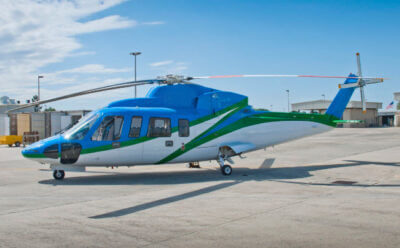
Sikorsky S76C++
Make an offer
Year: 2008
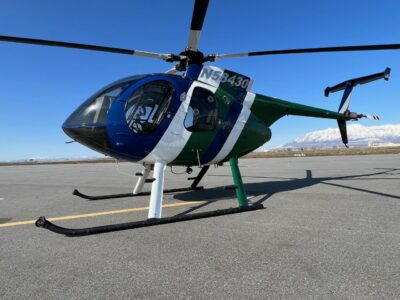
MD Helicopters MD500D
Contact seller for price
Year: 1979
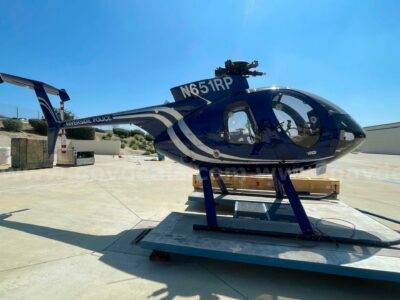
MD Helicopters 369E
USD $ 244,000
Year: 2008

Airbus AS350B3+
Contact seller for price
Year: 2010
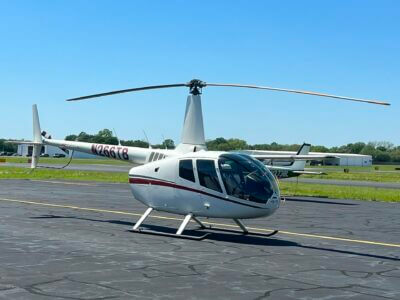
Robinson R66 Turbine
USD $ 785,000
Year: 2015
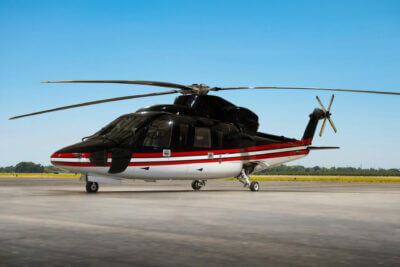
Sikorsky S76C+
Contact seller for price
Year: 1999
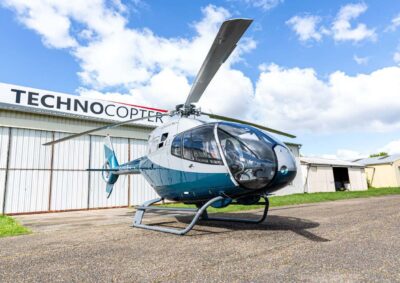
Airbus EC120B
Make an offer
Year: 2002
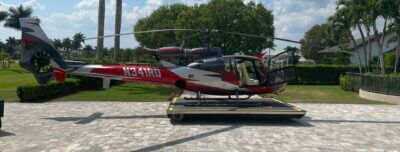
Airbus SA341
USD $ 695,000
Year: 1976
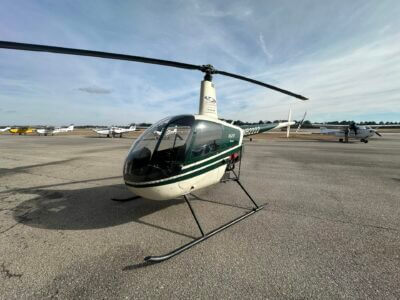
Robinson R22 Beta
USD $ 163,000
Year: 1988
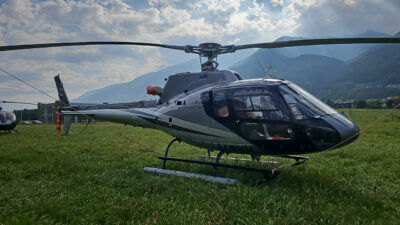
Airbus H125
Contact seller for price
Year: 2023







